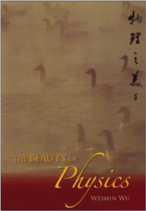By Weimin Wu, World Scientific Publishing. Hardback ISBN 9812705600 £29 ($54).
Weimin Wu has led an extraordinary life. Arriving at Fudan University in 1960 at age 17, he was inducted into a special “Section Zero” – by day he studied nuclear physics, in the evenings he helped with research into uranium-enrichment techniques for China’s atomic bomb.

In 1965 he moved to Lanzhou University as a graduate student, but a year later the Great Proletarian Cultural Revolution burst over China and graduate students were a major target. Wu was packed off to an arid mountain region, where he worked as a shepherd, lived in a cave and survived on potatoes, wild plants, rainwater and melted snow. When he was allowed back to Lanzhou, he found that his supervisor had been accused of reactionary scholarship and landlordism, and assigned to clean toilets. Wu himself was soon sent to be a labourer. A commissar rescued him in 1969 and employed his skills to help develop the launch control system of China’s first artificial satellite.
After the end of the Cultural Revolution in 1976, the Chinese government discovered that intellectuals were “part of the working class”. But as Wu writes, “the era that destroyed the talents of many also had cast a dark shadow over them for a lifetime”.
In 1978 Wu joined the group tasked with building China’s first particle accelerator and in 1980 he came to CERN for two years, joining Jack Steinberger’s CDHS neutrino group. Back in Beijing he led the Chinese group involved in ALEPH’s muon detectors, and in June 1989 he observed the first J/Ψ particle to be seen at BES, the Beijing spectrometer. Three weeks earlier he had participated in pro-democracy demonstrations and witnessed the army’s repression in Tiananmen Square. Shortly afterwards he left China and found sanctuary at Fermilab, where he now works on the CMS experiment.
Of the two achievements closest to his heart, one occurred on 25 August 1986 when, despite technical and political obstacles, he sent the first e-mail from China (to Jack Steinberger at CERN). The other achievement was this book of photographs.
Wu has been taking photographs since he was 12. His takes his subjects mostly from nature and from the places and people in his life. Many of his photographs are romantic images of flowers, sunsets, rainbows and landscapes. Several are more mysterious, such as a green swimming pool, lit from within, in a city at night. “To me,” Wu writes, “physics and photography are like a pair of twin sisters.” Both require elegance, conciseness and the good luck that “is granted only to those who are prepared”.
The book includes 12 pages of episodes from Wu’s life, 12 pages by him about his photography, and more than 100 pages of his photographs divided into “Flowers”, “Landscape”, “People” and “The Beauty of Physics” – a selection of photos that remind him of physical concepts, with titles such as Latticework and Multidimensional Space, including the cover, which shows Birds of a Feather Flock Together.





